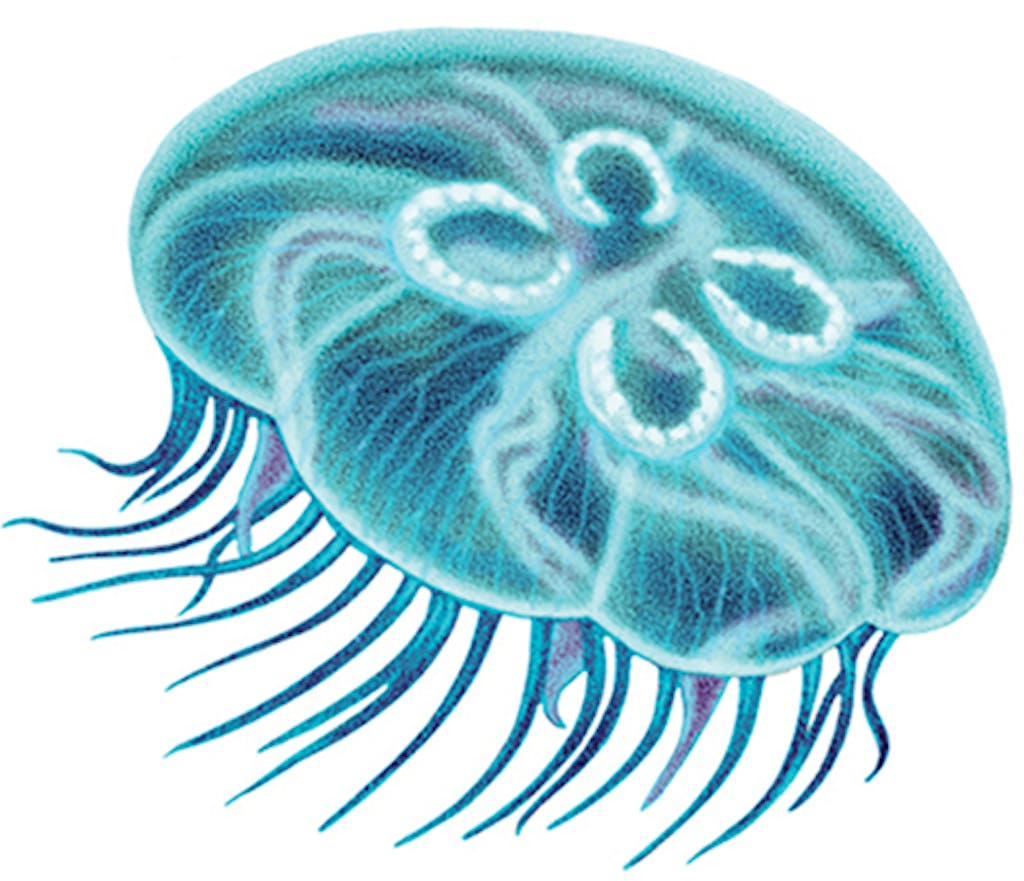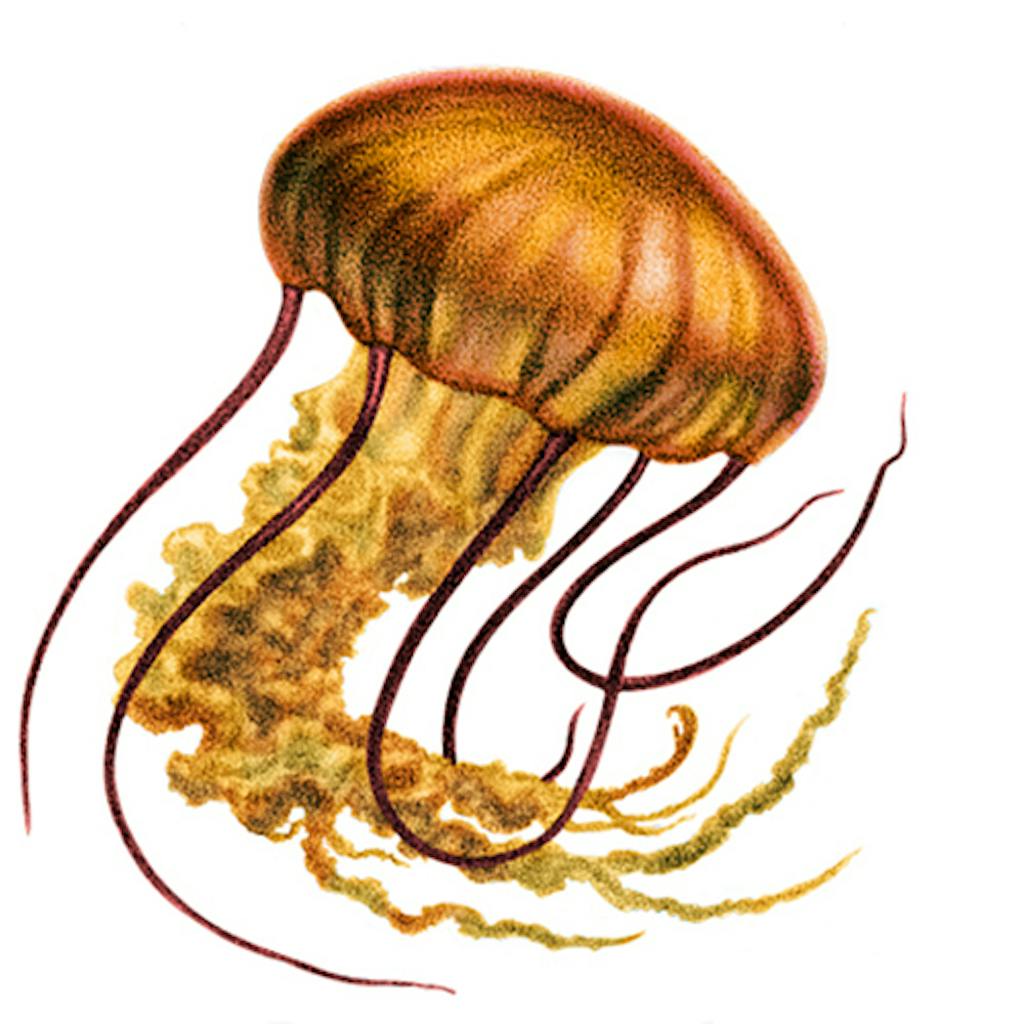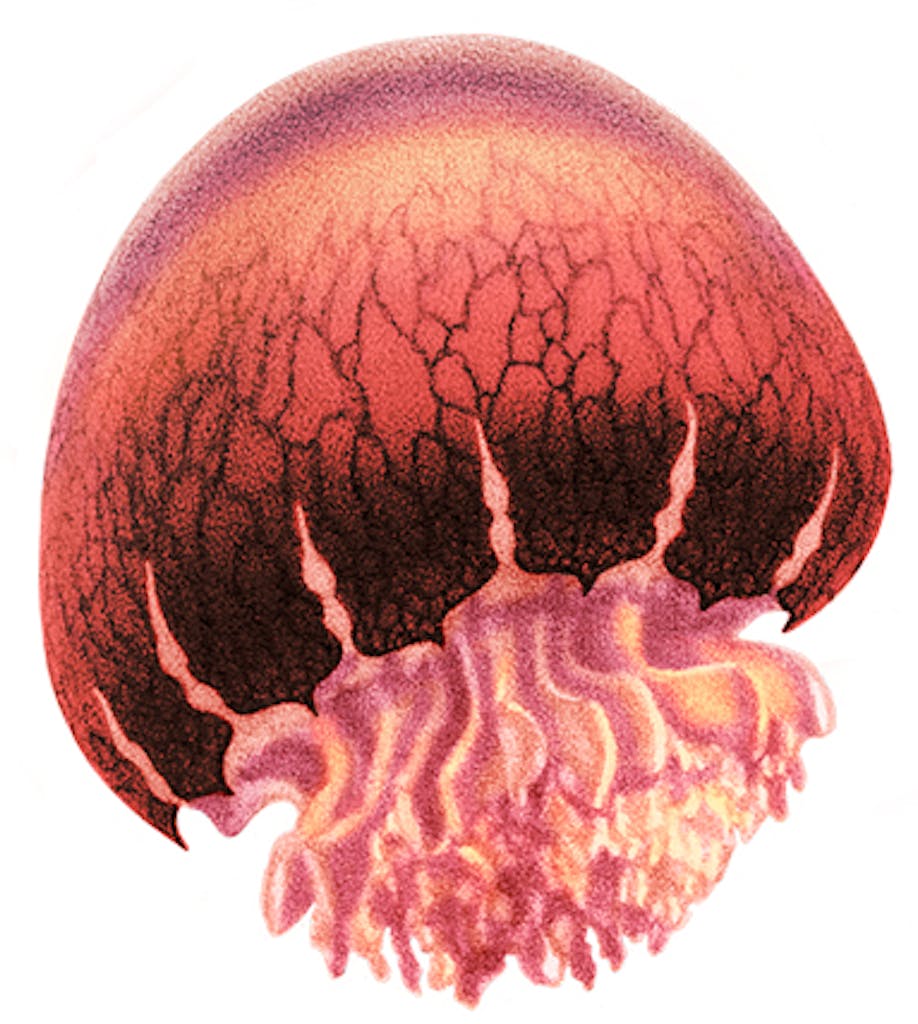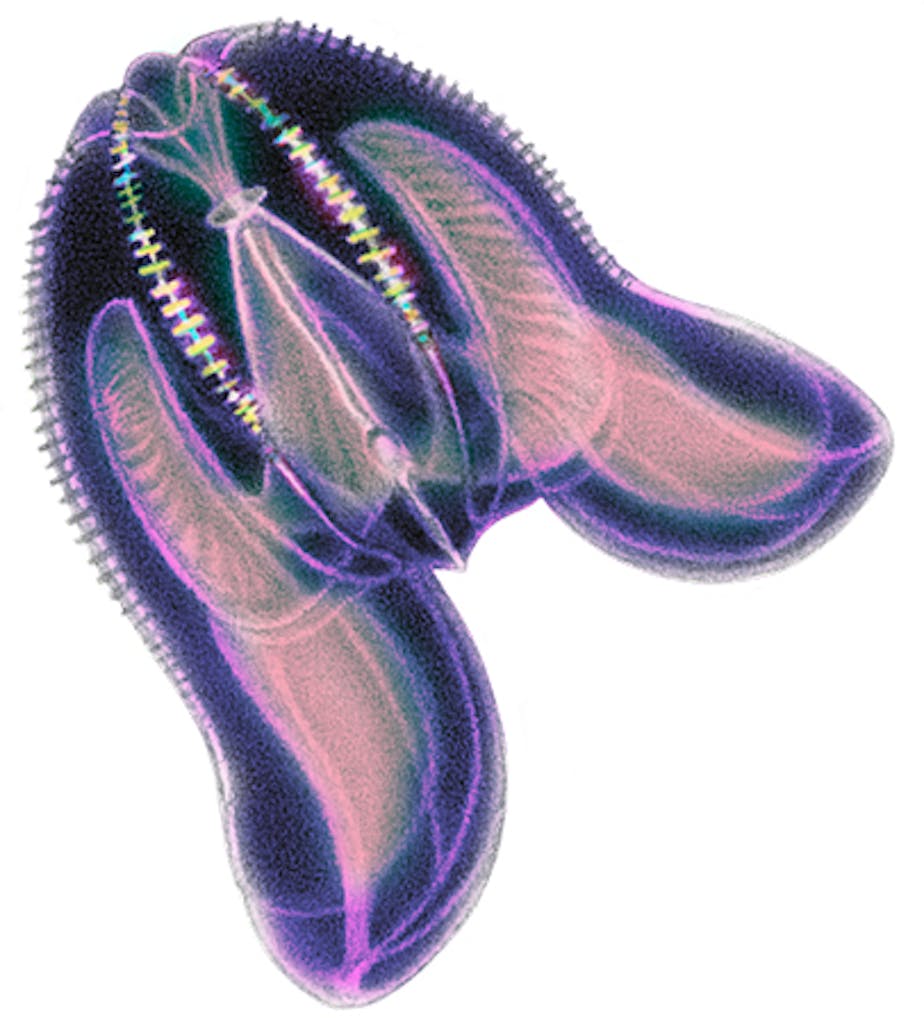Although no one can say for sure whether jellyfish blooms are increasing along the Texas coast, ocean ecosystems around the world are clearly becoming more gelatinous. Here are the five most common species found in the Gulf of Mexico, along with their sting ratings.

Moon Jelly
(Aurelia sp. 9 or Aurelia sp. new)
Clear except for a four-leaf-clover shape on their bells, moon jellies grow as big as a Frisbee. These jellies brood their larvae in their frilly oral arms until the offspring are old enough to swim off. Genetic data recently revealed that Texas is home to at least two different moon jellies that look nearly identical, a phenomenon known as cryptic speciation.
Sting severity: mild to medium

Sea Nettle
(Chrysaora chesapeakei)
Like nettles vexing your ankles in a pasture, sea nettles pack a nasty sting. They may be milky white or have rust-colored, pizza-wedge stripes. They have a classic jellyfish form, with oral arms and tentacles that can hang down two to three times as far as the bell is wide. They are most common around Galveston Bay.
Sting severity: high

Cabbagehead
(Stomolophus meleagris)
Texans have their own name for these jellyfish, which most of the world calls cannonballs for their spherical shape. They are edible and in Georgia account for one of the largest fisheries, along with shrimp and crab. No commercial operations have opened in Texas, but you might see cabbageheads washed up on beaches, especially near Port Aransas.
Sting severity: mild

Portuguese Man-of-War
(Physalia physalis)
Also called bluebottles for the peacock-colored float. These animals are siphonophores, belonging to a sister group of gelata known as hydrozoans. What appears to be a single creature is actually a collection of individuals working together in a colony. If you see them in the water, steer clear as their sting can be very dangerous and their tentacles don’t just hang down—they stretch out horizontally too.
Sting severity: high

Comb Jelly
(Mnemiopsis mccradyi)
Not technically jellyfish, these animals swim by means of rows of cilia that bend light into rainbows like the grooves on the back of a CD. Despite their flimsy appearance, they are voracious plankton predators. But not to worry, humans are impervious to their weaponry, which consists of spring-loaded cells that grab onto their tiny prey with a gluey ball rather than a pointy, poisoned microtubule like the ones that jellyfish deploy.
Sting severity: none
This article originally appeared in the June 2022 issue of Texas Monthly with the headline “Five Gelata to Know.” Subscribe today.

